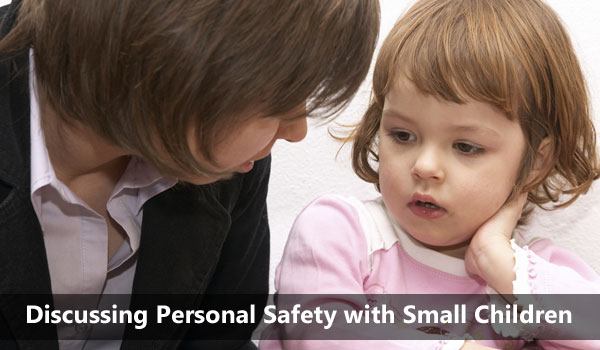Children under the age of five are at the most risk for sexual abuse. When we protect our children from sexual abuse, we monitor with whom our children spend time. But, pedophiles manipulate adults to get to children. Neighbors and others close to offenders frequently say they were shocked and had no idea abuse was occurring. In fact, abuse can occur when a parent is in the same room!
I’m enrolled in a multiple perspectives course on responding to child abuse; after each class, I return home longing to hold my children tightly, and never let them out into a world where no one can be trusted. But, we can’t live that way. Instead, we must teach our children to be safe. Children need to be empowered with age appropriate knowledge about their bodies and appropriate touching. This doesn’t rob them of their innocence any more than the lesson to never get in a car with a stranger. A predator searches for children who do not understand what is happening and will not tell. A child empowered with knowledge is not what a predator seeks.
A few months ago, Nancy Reynolds of Advocates for Children in Lewiston, ME lead a discussion on personal safety for small children for a group of parents. Then, I was lucky to hear her speak again as part of my aforementioned course. Below is the information she presented mixed with information from Ellen Crosby, a licensed clinical social worker, who works with both sexual abuse victims and sex offenders.
- Use correct terminology. Starting at birth, include private parts in your labeling of body parts. Identify the parts with their correct names. If it makes you nervous, practice saying the correct terms in the mirror. Knowing the correct terms makes a child much less desirable victim to the perpetrator; their command to stop the abuse sounds more authoritative and their communication of what happened is clearer and more likely to be believed.
- Identify Private Parts. Teach that bathing suits cover our private parts. Include that we look at and touch them in private, and you should not look at or touch someone else’s because they are private.
- Keep power over your child’s body with your child. Don’t force your child to hug or kiss or otherwise physically touch or be touched by others, even close family members.
- Build Self Esteem. High self esteem decreases the chance an offender will target your child, and it also increases the chances your child will disclose abuse, which is a huge factor of how traumatic an instance of abuse becomes.
- Define types of touch. Start with Happy touch including hugs, holding hands, tickling, snuggles, etc. Then, define Sad / Angry / Scared touch such as hitting, hair pulling, etc. Lastly, introduce Secret touch: When your private parts are touched for no reason, or you are tricked or forced to touch someone else’s private parts; when you are asked to keep touching a secret. You can also distinguish between happy secrets, such as a birthday present, that are kept for a short time versus secrets you are asked to keep for forever. A book to get you started on this is conversation is The Very Touching Book by Jan Hindman.
- The Clean and Healthy Rules. Introduce the idea that the only times a private area should be touched are if someone is helping to keep the private parts clean or healthy. You can brainstorm these situations with your child. A child can always ask why an adult needs to touch a private area. A child can ask if this touch is a secret.
- Ask “What if …” Ask your child what he or she would do in various types of situations. Don’t forget include being tricked or forced to touch the perpetrator’s body. My Body Belongs to Me by Jill Starishevsky is a simple text that can get such conversations started.
- Practice responses. Help your child practice what to say and do in uncomfortable situations. This includes: saying “stop,” “don’t touch my _____,” or “I am going to tell” and getting away. List people to tell if something happens.
- Repeat like any other type of safety. You can not tell your child this information just once or twice. Ask “what if” questions, practice responses, read books, and otherwise discuss this information with your child as you would any other type of safety lesson.

